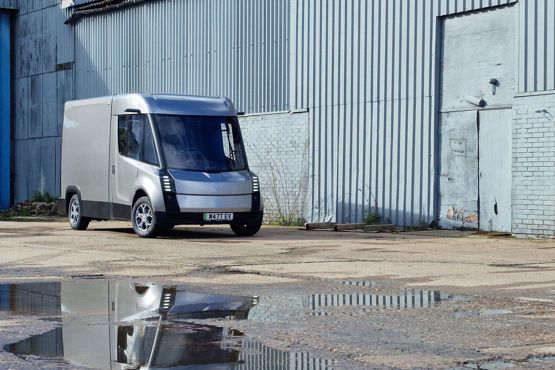
Watt Electric Vehicle Company (WEVC) has started road tests of its modular eCV1 light commercial vehicle after unveiling the prototype at the CV Show in April.
The 3.5-tonne electric van is one of a new range of electric commercial vehicles the brand plans to launch, with the first pre-production models set to enter the market in the second half of 2024 before a full launch a year later.
Following its debut at the CV Show, WEVC immediately started an intensive, real-world testing programme.
The vehicle is based on the eCV1's 3.5-tonne cab and chassis unit, complete with a body designed and built by electric commercial vehicle partner Etrux.
The next step is for WEVC’s electric vehicle modular platform technology to be adapted by Etrux into a range of offerings for the commercial vehicle market, including tippers, refrigerated, ambulances, Lutons and a 4.25-tonne chassis cab. Payloads are expected to be 1,750kg for the 3.5-tonne van and 2,500kg for the 4.25-tonne.
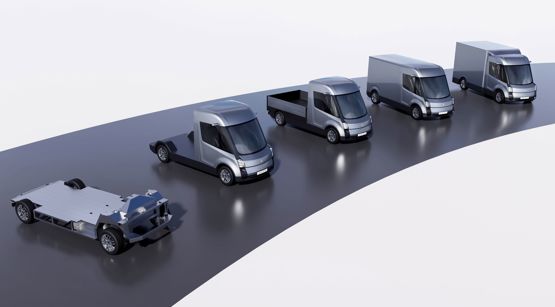
The chassis is based on the company’s proprietary PACES architecture, a lightweight aluminium platform which was developed to support commercial vehicle manufacturers, specialist vehicle converters and fleet operators. It will be offered with standard wheelbase lengths but WEVC would also be able to cater for bespoke requirements.
The eCV1 will be offered with a 20-year warranty and can be recycled at end-of-life. WEVC has designed the van to be updated twice over its working life with, for example, new drivetrain, replacement seats, new battery and trim upgrades. Battery outputs will be 50kWh and 100kWh giving range of up to 235 miles (or around 140 miles for the smaller battery). AC charging will be 22kW; DC is yet to be announced.
Speaking to Fleet News & Commercial Fleet at the CV Show unveiling, Neil Yates, CEO of WEVC, said: “Our unique approach to addressing the challenges facing the industry will enable the transition to mission-specific, yet cost-effective electric light commercial vehicles. We have embraced circular economy principles in the design, manufacture, and operation of our commercial vehicles to specifically align with increasingly stringent corporate and fleet operator sustainability responsibilities.
"This means understanding the CO2 emissions in the manufacturer, use and end-of-life - these vehicles are designed to be recycled, from aluminiumin the chassis to composite panels. For fleets wirth ESG targets, that will make a significant difference."
The business, which has an R&D site in Cornwall and a chassis and engineering team in Pershore, Worcestershire, intends to build a production facility in 2024. Its business model is build on an initial 5,000-per-year capacity which will focus on chassis cabs and panel vans for the converter market.
"The investment required to get to series production is of a different magnitude to some other start-ups," said Yates. "We are confident we have the funding to get to production."
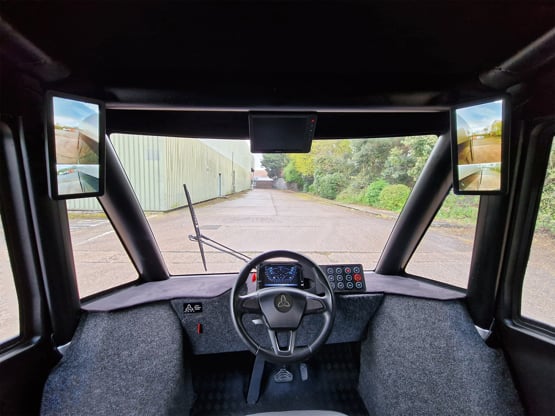
The eCV1 uses a cell-to-chassis system, which means the batteries are integrated to the primary structure to optimise stiffness, minimise weight and maximise payload. WEVC says the design means the eCV1 has none of the structural, weight and packaging compromises inherent in the majority of electric LCV designs.
The van features a central driving position and can be configured as a one-, two- or three-seater vehicle. The unique platform design enables full standing height headroom, facilitating easy ingress and egress and a ‘walk through cabin’ option.
Yates added: “The central driving position is good for passive safety and visibility. We are able to pull in the A-pillars so there is a smaller frontal area for better drag co-efficiency which increases the electric range.”
He intends to have a dual approach to sales: direct sales for medium-to-large fleets and sales via specialist converters for local business. The converters will also form the aftersales network for service, maintenance and refurbishment work.
"We are having conversations with fleets, especially about the extended lifetime and end-of-life recycling," Yates said. "They understand it and want to engage with it. We already have partners for our pre-production trials next year but will talk to others, both public and private sector."
> Interested in comparing electric vehicle data? Check out our EV tool.
> Interested in ensuring the efficient use of EVs. Check out our dedicated editorial sections: Insight & policy | EV news | Charging & infrastructure | Costs & incentives | Benefit-in-kind | EV case studies | EV road tests



















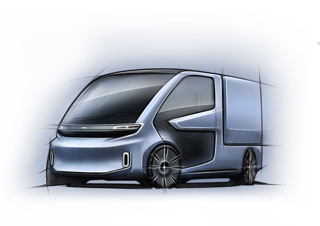

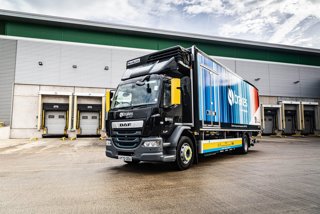
Login to comment
Comments
No comments have been made yet.